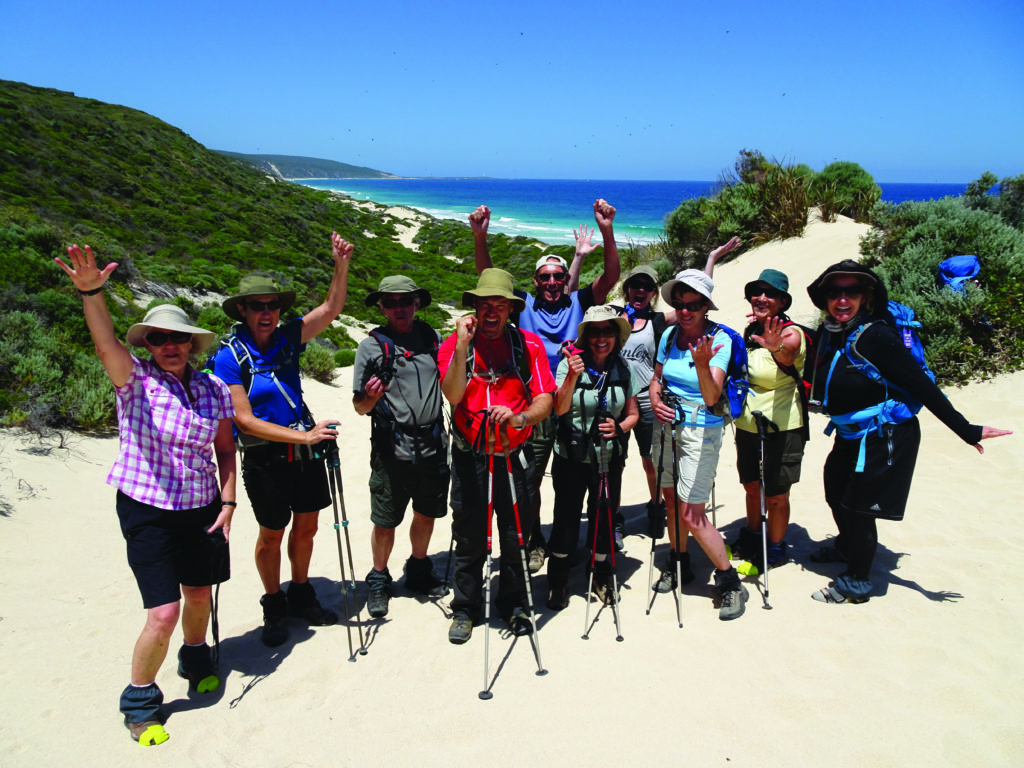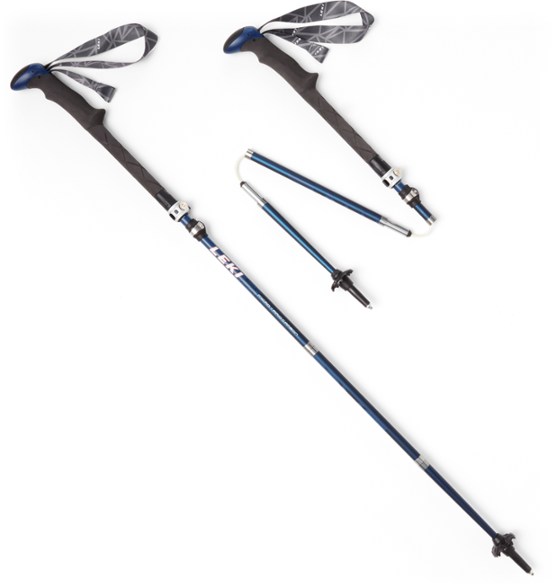Hiking Poles 101

Hiking Poles 101
Posted on
So you’ve decided you want to give this hiking pole thing a go. Your hiker friends love them, all the outdoor experts agree that they help save your joints, aid in balance and help you get up those steep climbs. Excited by the prospect of revolutionising your hiking, you walk into your local outdoor store and are overwhelmed by the variety of hiking poles on the market. How can a set of poles be so complicated!!! Luckily, buying hiking poles is not quite as complex as it seems so read ahead to get the low down on this hugely beneficial piece of kit.
There are several factors to consider when choosing the right hiking poles for you.
- Type of use
- Adjustable or Fixed Length
- Pole adjustment mechanism
- Number of sections and design
- Weight
- Material / Durability
- Packing Size
- Grip ergonomics
- Shock absorption
- Price
Type of use
Before you even start to look at all of the different types of poles on the market, it’s good to have a think about what your intended use for them is. Are you going to use them for relatively light hiking and day trips, or are you planning on multi day hikes carrying a heavy pack? Will you be travelling with them by air or will they just be thrown in the car for your commute to the hike?Having a good idea of what you will be putting your poles through before you start looking at them can help clarify your mind when you are bombarded with the array of features of modern poles.

Adjustable or Fixed Length
One very important difference between hiking poles, is whether you can adjust their length or not. Adjusting the length of your poles can be extremely helpful on varying terrain, and obviously is handy to be able to adjust to suit your height.
So why would you consider non adjustable poles? The main reason is weight. Poles of a fixed length do not need a locking mechanism so they are a little lighter than ones that do. If you find a fixed length pole that fits your height (your arm should be at about a right angle when holding them next to you), then saving that little bit of weight might be important to you. Just keep in mind though that quite often super light poles are not quite as durable as heavier ones.
Pole Adjustment Mechanism
If you’ve decided you want an adjustable set of poles, one of the first things you’ll notice is the mechanism that allows you to adjust their length. There are 2 main types, lever lock and twist lock.
Twist lock poles were the main locking mechanism when hiking poles first became popular but now they are far less common. They’re not my favourite as I found they often come loose and don’t securely lock the pole into place. I much prefer the lever locking system as they are far more reliable to securely lock the pole. They are also super easy to use with a simple flick of the lever to lock and unlock the pole, making it quick and easy to adjust.
Number of Sections and Overall Design
There are three main designs that nearly all trekking poles use: three-section telescoping, folding, and combination versions. Two section poles are typically the strongest, and poles that have a combination of telescoping and folding offer a great combination of packability and adjustability. They all have their benefits so it’s a matter of figuring out which is most important to you.
Three Section Telescoping
Three-section telescoping poles are the most common design you will come across. They are very durable, and also allow a wide range of length adjustment. They can be strapped to a backpack or put into an averaged sized suitcase fairly easily. They are the most popular type of pole that people buy for general hiking, due to their durability.
Folding
Folding poles are the lightest and most compact models out there, but they aren’t nearly as durable as most three-section telescoping poles. They are however typically durable enough for most hikers only wearing lighter backpacks on easy terrain. They are especially handy for travel because they can usually be packed inside a backpack pretty easily. In general, folding poles are a bit lighter and more compact than three-section telescoping poles. Pretty much all folding style poles lack the option to adjust the poles extended length which to me is a significant drawback, but if weight and compactness are your main priority, they may be the pole for you.
Combination
Many new folding style poles also feature one section of telescoping pole which makes it possible to adjust the length, though not as much as three-section telescoping poles. This is a really handy addition to the folding style pole as it allows it to be more versatile. It does add a little bit of weight to the folding design, but does offer a little bit of the best of both worlds.

Weight
The next thing to consider when choosing your hiking poles is the weight. A lot of people immediately come to the conclusion that lighter is better but it’s not quite that simple. Lighter poles tend to be less durable than heavier ones, usually because they are made with a more fragile carbon fibre material and have have a thinner construction. Lighter poles also tend to be more expensive. The good thing is that there is not really that much difference between the lightest poles and the heaviest poles, so if you need something a bit tougher and cheaper, it won’t cost you too much weight.
Material and Durability
The material that your hiking poles are made from have a significant impact on weight and durability. Aluminium and carbon fibre are the two most common materials used in trekking pole construction.
Carbon Fibre
Carbon is a light, stiff material that is used in products that need to support a lot of weight, but also need to be light. When loaded vertically, carbon fibre poles are extremely strong, and are the lightest poles that you can buy. However, they are weak when bent horizontally which is not ideal in very rocky terrain where your poles can get stuck and snap. They also can chip or crack easily on rocks, which again makes them more likely to snap. Carbon fibre poles are best for lighter hiking where weight is your most important consideration.
Aluminium
Aluminium poles are heavier than carbon fibre poles, but they are much more durable. They also tend to be a bit cheaper and bend without snapping, which can be a lifesaver on long trips where breaking a pole would be a major problem. These poles are best when durability is your main priority, and suit longer distance trekking on rougher terrain. They’re also great if your on a bit of a budget.
Packed Size
Packability can be another important factor when choosing your hiking poles. If you are going to be packing your poles in airplane luggage, or want to easily store them in a day pack, then a smaller packing size can be very handy. However if you plan on using your poles the entire time your hiking and aren’t don’t need to pack them in luggage, then size is less important.
Generally, foldable poles collapse much smaller than three section telescoping poles, but of course they are not adjustable. Combination poles fold down to a short length, but also feature one lever lock adjustment mechanism to provide some length adjustment so again, a good compromise.
Grips Ergonomics and Material
Most pole manufacturers have different grip designs, which mean some feel more comfortable in the hand than others. More expensive poles tend to have better grip ergonomics, but do prove their worth as hand comfort can make a big difference when out on the trail.
Pole grips come in a few different varieties; cork, foam or rubber.
Cork grips are great because they mould to the shape of your hands over time. They are also comfortable on the skin and keep cool during warm hikes. Their drawback is that they don’t absorb sweat very well so can feel a bit slippery after a while.
Foam grips are usually more comfortable than rubber, absorb sweat very well, and are the lightest grip material. For this reason, it is typically found on the lightest poles that are designed for fast hiking and running.
Rubber grips don’t absorb any water, can be irritable on bare skin, and are the heaviest option, but they do insulate better than cork or foam. This makes rubber a great grip material if you plan on hiking in extremely cold temperatures.
Shock-Absorbing Poles
Some poles on the market have internal springs that absorb shock when you walk downhill. On most of them, you can turn this feature off when it’s not needed, like when you’re walking uphill. Shock absorption is a nice feature for any hiker, but is really great if you have unstable hips, knees or ankles or have had any previous injuries to those joints.
Price
Last but not least, price is definitely a consideration when choosing hiking poles. They can be very expensive so you have to weigh up how much you are willing to spend for the benefits that they offer. A lot of the more expensive models have features that are quite specialised so not necessary for the every day hiker.
So there you have it, hiking poles in a nutshell. Whichever type of pole you choose will certainly help conquer those steep climbs, cross those awkward rocky streams and go a long way to maintaining your longevity on the track. Give them a go, once you do, it’s hard to go back!
*Would you like to know how to use your new hiking poles. Click here to watch a video on proper hiking pole technique.



